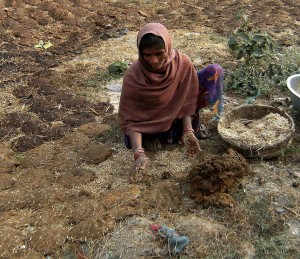
Fossil fuels are used for energy to heat homes and serve commercial and other purposes. Other sources include geothermal and solar energy. But there is a very important and non-fossil fuel commonly in use throughout much of the world. The resource is plentiful and offers an assortment of advantages as well. You don’t mean (yes I do) animal dung for fuel?
Dung for Fuel
The dung of choice is – yes – buffalo, cow, llama, and camel dung.
Dung is the excrement, manure, or feces of an animal, and is commonly called animal “pooh.” It is of ancient, historical origin, even being referenced in the Bible, although not in a positive context. Dung is most readily burned dry. It is a source of energy, particularly well suited when combined with water and straw, then formed into cakes and dried.
Advantages
What are some of the benefits of its use? Among other things, dung is cheap, renewable, and readily available. It produces less pollution than results from the burning of fossil fuels. Before it is burned, dung can be used in the production of biogas. Dung, as odd as it may seem, may be one of the major fuels of the future.
Other Uses
Using the brown stuff for fuel isn’t the only application for animal dung. Were you aware it is one of the most popular materials worldwide for the manufacture of bricks for building and for use in kilns? There are really good reasons for that. A thorough explanation for that is found in the article Bricks and Rocket Stoves Made from Clay, Dung and Straw.
Note: You might also enjoy Bricks and Rocket Stoves Made from Clay, Dung and Straw
References:

No doubt cow dung is a very good source of fuel. But it is observed that the calorific value of cow dung is less than [that of] coal; that is why it is not used as fuel on large scale. How can the calorific value be increased?
A very good source of energy that is often wasted in richer countries.